Episode #389: When Math Curriculum Alignment Feels Like a Threat to Your Autonomy
LISTEN NOW HERE…
WATCH NOW…
Is it possible for teachers to have both autonomy in their math classroom and alignment with district goals? In this episode, we challenge the idea that autonomy and alignment are opposing forces. Instead, we explore how they can work together to create strong, consistent math programs while still honouring professional judgement and instructional creativity.
From pacing guides to new resources, we reflect on how district structures can feel restrictive—but don’t have to be. When done well, alignment provides clarity, consistency, and support, without sacrificing a teacher’s voice or expertise.
In this episode, you’ll discover:
- Why autonomy and alignment are not opposites—but parts of the same system
- How strong alignment can actually support, not diminish, teacher autonomy
- Real examples of how districts and teachers can find the right balance
- How to shift the narrative around pacing guides and new resources
- Why system-wide alignment benefits students without disempowering teachers
Attention District Math Leaders:
Not sure what matters most when designing math improvement plans? Take this assessment and get a free customized report: https://makemathmoments.com/grow/
Ready to design your math improvement plan with guidance, support and using structure? Learn how to follow our 4 stage process. https://growyourmathprogram.com
Looking to supplement your curriculum with problem based lessons and units? Make Math Moments Problem Based Lessons & Units
Be Our Next Podcast Guest!
Join as an Interview Guest or on a Mentoring Moment Call
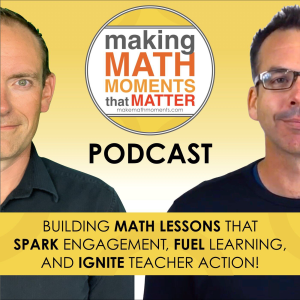
Apply to be a Featured Interview Guest
Book a Mentoring Moment Coaching Call
Are You an Official Math Moment Maker?
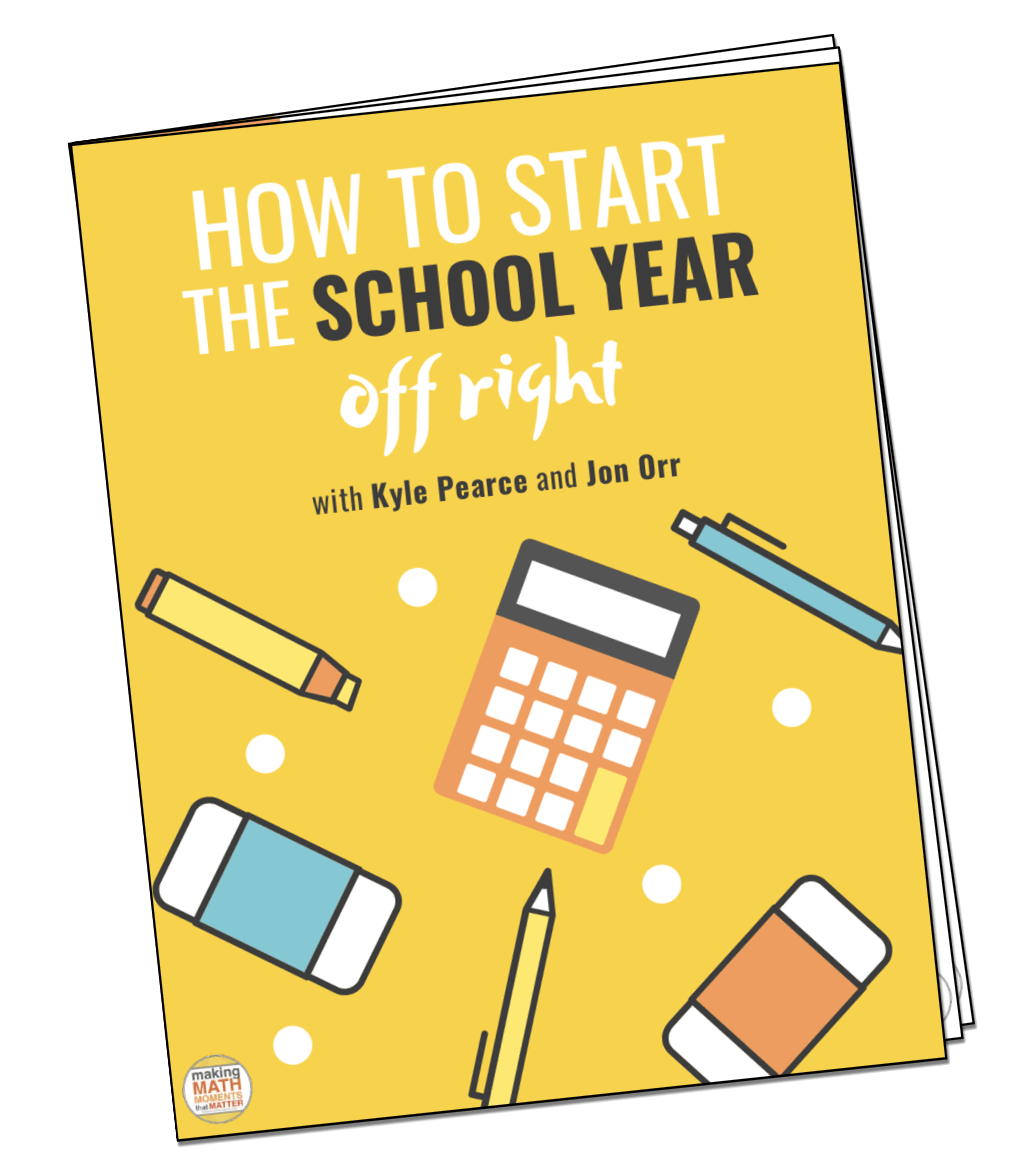
FULL TRANSCRIPT
Yvette Lehman: Today, we actually recently recorded an episode around the idea of autonomy and alignment, but that episode was geared to leaders. And today we’re going to talk about the implications of this dynamic for the classroom teacher. How do you align with the rest of your school, the rest of your district as far as strength? Right, like alignment is important while also…
Jon Orr: Right, and like, why is that important? Maybe it’s not.
Yvette Lehman: respecting your autonomy and your professional judgment. Like is it possible for those two things to be true that I can align and also still have autonomy to make instructional decisions that I know work best for me and my students?
Jon Orr: Right. And, and I know that in that, that previous episode, which I think was if you have to, you have to go back, it’s a couple of months ago that we, we unpacked that. So, so, you know, if you’re rewinding, look for the words autonomy in your episode title. But I know that when we talked about that, we talked about that most folks think about this, this, this pull, this, this, this tug of war that happens between having freedom and flexibility, full, full autonomy.
And the opposite side of that is like, you know, no autonomy and alignment. It’s like, we’re all in a line, we’re all lock step, but it’s like, we were viewing it as it’s not a number line continuum, right? It’s not a linear continuum here. It’s actually like a space. It’s actually like a two dimensional space. So you’re thinking about like your grid, your coordinate grids. It’s like.
you’ve got autonomy along, say, one of those axes, but then vertically, you’ve got the other, like, which is alignment, which means now you’ve got four different quadrants to where you means we can have high autonomy, high alignment, but low autonomy, low alignment. And those are opposite ends of the the quadrant, you know, or the quadrants, you know, in, say, the Cartesian space. So, so that’s, that’s the way we’re going to maybe position this too, is to think about this for kind of quadrant areas when we’re thinking about this is not a just a either or but actually more complex than that.
Kyle Pearce: Mm-hmm. Well, and I think today’s episode too, we’re going to talk about and we’re going to like pick a scenario that happens quite often because I think it’s good to kind of ground this conversation and we’re going to talk about, you know, when the district or a school mandates a new resource and or a new say scope and sequence. And this one, you know,
It’s close to my heart because we were involved on both sides of this sort of scenario as classroom teachers. And we were also the ones on the other end working at the district office trying to implement sometimes a new core resource or a new scope and sequence. Specifically, my recollection is back during the COVID period. And this is incredibly challenging because…
as a district, we’re trying to get aligned and we’re trying to do things for the right reason, which is to make sure that all students have the best opportunity to learn and understand mathematics. However, oftentimes this can maybe unintentionally hinder or encroach on the autonomy of the teacher. And we kind of want to talk about this, like, you know, how do we go about doing this in a way
that we can make teachers feel confident that making these changes does in fact make sense. And what do you do when maybe you’re an educator and you’re sort of wondering, and I remember feeling this way myself was like, I’ve spent a lot of time and energy to put together my specific math program for this specific course or this specific grade. And now someone’s coming in and sort of telling me to do it a completely different way, possibly, right? Maybe it’s in line, maybe it’s not, maybe it’s somewhere in between.
but this is incredibly challenging and really I’m gonna argue that it’s hard on both sides, right? Because both sides want the best for the student. So I wanna go back to Yvette, what are you thinking when we are in a situation where a school or a district is in fact implementing a new resource or a scope and sequence or maybe it’s the combination of the two and. We wanna make sure that we do aim for alignment, but we also don’t want to go to the point where someone feels like autonomy has completely been lost. What’s floating through your mind right now?
Yvette Lehman: think that I have two answers and one is my past self, how I would have responded and then how my current self would respond. I feel like when I was in the classroom, I had, and we talked about this, it’s almost like false confidence. I was so, we, I mean, you guys both know this about me.
my strong convictions. I really felt like I had such a good grasp on the grade six curriculum and I understood the grade six learner and I’d invested so much of my own time and energy to designing my own scope and sequence and my own lessons. And I was only leveraging some board provided resources because I essentially created a program from scratch, you know, pulling from some high quality instructional materials, but I was, I was carving my own path.
Jon Orr: Okay. Right. And you’re probably seeing success. Yep.
Yvette Lehman: And I felt like I was seeing success. And I think that had someone come in at that point in my career and said, scrap the long range plans, you’ve put hours and hours and hours thinking about and develop and use this one instead. I think I probably would have felt defeated, not valued. Yeah, for sure.
Jon Orr (05:46.062)
or vaulted, because that’s what I would have done, right? Because the way that you just outlined that was definitely, and here’s the interesting thing, is like, think you’re saying that that was you early, but I felt like that was me later, because it’s like, I’ve been doing so much thinking and learning that say, the district hadn’t given any sort of alignment or guidance towards. so then if I was, because this never happened to me being,
high school teacher, they’re like, my district was like, Hey, what textbook are you using? You know, and, and so like that, that whole scope and sequence wasn’t really there for us, you know, at that level. So my, my head was like, I’ve built a program that I think has been, you know, having some success. And if at that point, if someone said like, no, throw that out the window, we’re all doing this. I would be like, there’s no way I’m doing that. And unless
unless it was like, this is exactly what I’m doing already. Like if it was perfectly aligned with what I was trying to do in my mind, like my puzzle, like when we talk about that all the time, it’s like my puzzle is built and the district’s puzzle looks like my puzzle. Awesome. Let me see what you got. Maybe there’s something better there for me to fit this in, but the way that you are positioning this is like, hey, here’s something else you have to do. Ooh, that’s where my revolt felt like was gonna take over.
Kyle Pearce: Well, I want to talk about two sides here because it sounds like former event and current Sean. Is that what you’re saying? I’m not really sure, but yeah, you and I respect it.
Jon Orr: I think so, I think so. I’m gonna like hold back, like not hold back, but I’m gonna put a little pin in there, because I reserve the right to like comment on that comment a little later, because I think I’m gonna, I think I’m going to. No, I know.
Yeah, yeah, yeah. And I don’t mean it to be bad. I know I’m joking here, but I think though, like what you’re saying, John, is like, it’s almost like the further, the longer you plan, the longer you put time and effort into building your program, growing it, testing it, trying it. Sadly, it’s like we’re testing it on 20 years worth of kids before we’re like, yeah, now we’ve got the perfect one, right? Like this is the problem. There’s sort of two aspects here. Like there’s the side that
Kyle Pearce: I feel bad for folks like you that have put the time and the effort and the energy into developing the programs you had developed, but then there’s the other end of the spectrum. What about the other teachers that haven’t put the same time, thought, or energy into it? Or maybe they just aren’t as well positioned to be able to do some of that thinking. So it’s like the hard part about this when it comes to alignment.
is that autonomy is amazing in some classrooms with how certain teachers utilize it. However, they’re still maybe not aligned, which causes a little bit of problem. But then the big worry is, like having too much autonomy in a classroom where maybe the teacher actually isn’t able or willing to put in that same amount of time, effort, energy, and like, what does that program look like? And then when we zoom out,
and we talk about this with our district leaders all the time, we zoom out and then we start to see those pockets of success happening, but we’re missing that sort of consistency, that sustainable from year to year success that really will help to impact or influence a student’s math trajectory. lots here. Yvette, you had mentioned old you, but you had said there’s two parts and I don’t think we got to the second part.
Jon Orr: Mm-hmm. We jumped on her. We jumped on her.
Kyle Pearce: So come back to like, think she’s gonna talk about new event or current event. What’s different now compared to that thinking that you had had when you were in the classroom.
Yvette Lehman: think that now I would be totally open to the journey because I recognize that my classroom is not a silo. It’s part of a system and that it’s not just about me and the learning experience, but the students in front of me. And so I guess I’ll elaborate more on that. If I want to…
share experiences and build capacity and others around me. It’s like the more aligned we are, the more opportunities there are for conversations, for moderated marking, for us to be using the same assessments. And then it becomes a lot more cohesive and collective and we’re all working toward the same goal. We’re teaching the same units at the same time. So we’re having conversations about the content because we’re all living in the world of fractions right now. And we’re living in breathing fractions and there’s opportunity for
more collaboration, more partnering. I think that I, as I mentioned before, I had such a false confidence that I believed the program that I had built was the best program. And I think now I would be willing to step into somebody else’s understanding of the curriculum and experience their journey that would actually only strengthen mine.
So imagine I have my own idea of how to unpack and how to deliver the grade six content, but I commit this year because the board just bought a new resource to actually using that resource with fidelity. I believe that by using that resource with fidelity, if it’s a high quality instructional material, I will actually become stronger because I’m going to get another interpretation of those same standards or expectations. Here’s where I keep my autonomy though.
And that’s what we talked about, right? Like these two things don’t have to compete. I can follow the scope and sequence. can support the implementation of the core resource, but I can still build in additional fluency routines in a spiraled way. I can have centers that bring in, like, let’s say the scope and sequence doesn’t bring in division until later in the year, but I’m like, no way, you know, I can’t wait until, I know I can’t wait until January.
I bring that into my centers really early on. I do Friday cumulative review of key concepts. Like I think that there’s a way to align while also still maintaining my integrity of what I believe good practices and will get me the best outcomes for students. I don’t think it has to be one or the other.
Kyle Pearce: And what I’m imagining in my mind is what it sounds to me like is that this the new the new implementation of this resource, this scope and sequence, it sounds like there’s enough flexibility that we’re not talking about a completely scripted day by day. Thou shalt say and do these exact things. There is some flexibility there, which I think is really important to note as well for the district leaders that might be.
ready to implement a new resource is going, OK, I need to make sure that I’m saving some autonomy here, that we can’t get this down to scripted, where if I walk into this classroom, I know they’re going to be saying paragraph three on page 148. We need to have enough flexibility there so that there are opportunities. And what I was imagining in my mind is I think old Kyle, I guess I’m on Yvette’s side here a little bit, old Kyle.
would have been very, would have been very hard, like I would have been hard pressed to change my very, very specifically planned long range plan for any of my courses. However, I would argue that since John, you and I went on the journey to do interleaving and spiraling, I think that process opens the door to make it a whole lot easier for someone to be able to say,
this is the scope and sequence we’re looking at. I can live with that because like when I spiraled, I basically took my old plan and I was like, throw this in a blender and let’s see. Now, not recommending you do that approach. I learned a lot by doing it. There has to be intention. There should be a very specific reason why you’re going to spiral in the way you’re spiraling. that, like it allowed me to realize that
the order that I did things in, wasn’t like Monday’s lesson’s gonna make or break Thursday’s lesson, right? Now mind you, if Thursday’s lesson is much deeper from the concept, of course that would be important, but ultimately you can move things around and you can do things differently and still come out with very either similar, maybe even better results. And therefore, I think it really just comes to maybe like giving up.
full control because as educators, we are known to want control. We want discipline in the classroom, classroom management. We want things to happen a certain way and I think really what this is all about is us being able to say, you know, while I maybe prefer or like or am used to doing things a certain way, I can give up some of that and it’s not going to make or break whether
I’m a successful teacher or not, or whether my students are going to be successful in my classroom. So it really, I think, comes down to just being a little bit more flexible. It doesn’t necessarily mean you have to give up all the autonomy either, right? And I think that’s where the balancing act really comes from. Getting that dot in that Cartesian plane you’re talking about, like getting it somewhere in the, you know, we’re going to call it quadrant one. somewhere in the middle there where we get a nice sort of diagonal line, you know, going all the way up.
Jon Orr: that these are the epiphanies that think that we’ve had over our careers is that we’ve had strongly held beliefs, but we’ve realized that we need to loosely hold them. We’ve talked about that idea a number of times. And you’ve had strong beliefs and you’ve strongly held them, but you learn to like say, have strong beliefs, but I’m gonna loosely hold them because I can mold what I have here for a bigger cause. Because now you’ve got to realize that there are bigger things and I want to be part of the system. I want to be part of growth.
outside of my classroom. And when I have that flexibility, that belief that the work that we’re doing is beyond the walls in my room, my students, then it opens those, you it opens that collaborating doors. And all of a sudden, now we can move together and I can be that leader that I need to be. You know, when we have those strongly held beliefs or you’re working with teachers that have those strongly belief, they’re strongly held, then those, you know, those are hard to like move forward as a group.
And I think, I think this, this is the epiphanies that we’ve had, you know, along the way. I think, I think what we want to do is also is go, how do we help our, our fellow colleagues have similar epiphanies about, you know, loosely holding some beliefs because we could be working with someone who has done the work that we did, but then it says like, I, I realize that you’re providing me a scope and sequence in the department or the grade level is going to move that way, but I’m not doing it.
Because I’m going to hold my beliefs strongly held and now you’ve got that person. So it’s like, well, we’ve got to help that person slowly build trust, slowly build that culture to say, these are okay things to have. You’ve done some really great work here. But we are moving this way. And that’s sometimes hard to work with in a department or in a grade level team.
Kyle Pearce: You know, when I think about this discussion, you know, maybe these are sort of things to think about regardless of which side of the situation, the table you’re on. If you’re a classroom teacher or you’re someone working in the leadership team, that’s going to be implementing a new curriculum or a new resource scope and sequence is really being able to feel confident that whatever your stance, your current stance is that you
can articulate the why behind it. And I think this is really important is being able to, if I’m a classroom teacher doing things the way I’m doing them, being able to articulate like why you have been doing them that way and why you maybe prefer to do it that way, but then keeping the open mind to hear the other side. And that also goes for the leadership team to be able to come in and to be able to be very clear.
around why we’ve selected this resource instead of another, why we’ve done the scope and sequence in the way, like what’s the purpose, like what are we hoping to achieve in doing so? That really comes down to that visioning, right? And planning like why we’re doing what we’re doing, what are we trying to achieve? And then being like the more we communicate with an open mind, we can have a stance. It’s just, we don’t want it to be a standoff. We wanna have a stance. You can share your stance, share your opinion.
But you also have to be open to learning and accepting the fact that maybe there’s something new that we can learn because I know that the new me, the new Kyle, recognizes there’s a lot of things that I thought I knew that I just didn’t have enough information about. I maybe didn’t have enough experience with it or I just didn’t have that epiphany like John, you’re referencing there. So that for me is maybe like an action step for anyone to.
regardless of which side of the table you’re on, is being able to articulate why you believe what you believe and why you’re doing what you’re doing, but then having the open mind to hear the other side and trying to figure out how do we work together so that we can get to the greater goal together. Because just like Yvette said, your classroom is not a silo. The problem is that we often treat our classrooms like they are.
Kyle Pearce: and that is not going to help us get that systemic change that we’re after. We might see some growth in our own silo, but as soon as those students leave your silo and go on to the next, is that going to continue or are they gonna have to relearn and retry things over and over and over again? So really working together, I think is gonna be key. And of course, keeping that autonomy with a nice solid amount of alignment. in check, think it’s going to be a game winner for you, your school, and your district.
Jon Orr: Yeah. I hope you noticed here that we didn’t have full answers, but we’ve provided, you know, ways to think about this, you know, ideas like when we said epiphanies, we talked about the spectrum is not necessarily a either or it’s not a linear spectrum between autonomy and alignment. It’s, it’s more of a grid. It’s more of a space and where do we live in that space has to deal with a few areas of our classroom trees, you know, like we talked about our, our soil or water, our sunlight.
These are the things that support and help us grow, which is really in the way that we are thinking about our math classes is our beliefs, is our understandings, our culture of the rooms that we’re creating in our own classrooms. We talked a lot about that right here, is to think about where do we live in this spectrum, this grid, this space for our own belief around how strongly we hold what we’re trying to do in our class and being open.
to other interpretations open to a group mindset across a school or across a school system. The other thing we, Kyle, you know, just mentioned here is, is, is something we call it the leadership, you know, in our vision planning, which is really our trunk of our tree and having a strong trunk is really, you know, gearing towards like, what are we really trying to do in our classrooms, in our schools, as an educator, what is it that I’m here for? And when we can answer that, that helps clarify and probably position you in a different space.
on that spectrum, that space between alignment and autonomy. So those are really the two big kind of areas of our tree that we specifically talked about here today. And if you want to know more about that tree, want to know where you fit on the tree or which component of your tree, whether it’s the leaves or the branches or the limbs or the soil, water and sunlight, head on over to makemathmoments.com forward slash grow.
Make math moments.com forward slash grow fill out that assessment. You’ll get a report about the six areas of your classroom tree.
Thanks For Listening
- Book a Math Mentoring Moment
- Apply to be a Featured Interview Guest
- Leave a note in the comment section below.
- Share this show on Twitter, or Facebook.
To help out the show:
- Leave an honest review on iTunes. Your ratings and reviews really help and we read each one.
- Subscribe on iTunes, Google Play, and Spotify.
DOWNLOAD THE 3 ACT MATH TASK TIP SHEET SO THEY RUN WITHOUT A HITCH!
Download the 2-page printable 3 Act Math Tip Sheet to ensure that you have the best start to your journey using 3 Act math Tasks to spark curiosity and fuel sense making in your math classroom!
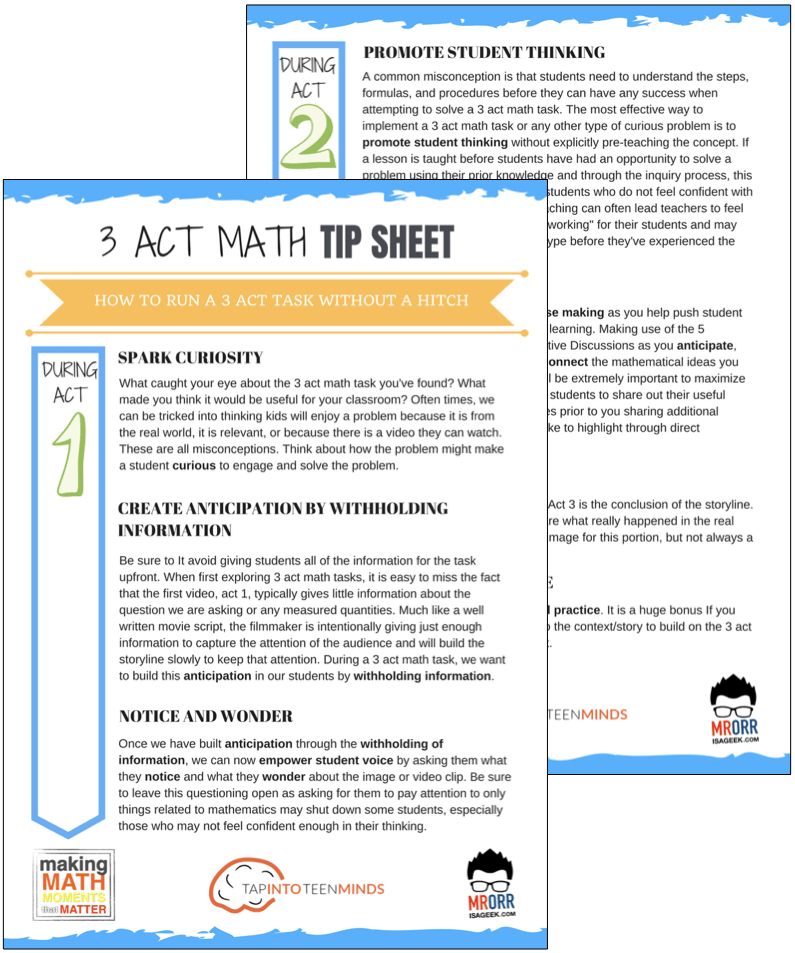
LESSONS TO MAKE MATH MOMENTS
Each lesson consists of:
Each Make Math Moments Problem Based Lesson consists of a Teacher Guide to lead you step-by-step through the planning process to ensure your lesson runs without a hitch!
Each Teacher Guide consists of:
- Intentionality of the lesson;
- A step-by-step walk through of each phase of the lesson;
- Visuals, animations, and videos unpacking big ideas, strategies, and models we intend to emerge during the lesson;
- Sample student approaches to assist in anticipating what your students might do;
- Resources and downloads including Keynote, Powerpoint, Media Files, and Teacher Guide printable PDF; and,
- Much more!
Each Make Math Moments Problem Based Lesson begins with a story, visual, video, or other method to Spark Curiosity through context.
Students will often Notice and Wonder before making an estimate to draw them in and invest in the problem.
After student voice has been heard and acknowledged, we will set students off on a Productive Struggle via a prompt related to the Spark context.
These prompts are given each lesson with the following conditions:
- No calculators are to be used; and,
- Students are to focus on how they can convince their math community that their solution is valid.
Students are left to engage in a productive struggle as the facilitator circulates to observe and engage in conversation as a means of assessing formatively.
The facilitator is instructed through the Teacher Guide on what specific strategies and models could be used to make connections and consolidate the learning from the lesson.
Often times, animations and walk through videos are provided in the Teacher Guide to assist with planning and delivering the consolidation.
A review image, video, or animation is provided as a conclusion to the task from the lesson.
While this might feel like a natural ending to the context students have been exploring, it is just the beginning as we look to leverage this context via extensions and additional lessons to dig deeper.
At the end of each lesson, consolidation prompts and/or extensions are crafted for students to purposefully practice and demonstrate their current understanding.
Facilitators are encouraged to collect these consolidation prompts as a means to engage in the assessment process and inform next moves for instruction.
In multi-day units of study, Math Talks are crafted to help build on the thinking from the previous day and build towards the next step in the developmental progression of the concept(s) we are exploring.
Each Math Talk is constructed as a string of related problems that build with intentionality to emerge specific big ideas, strategies, and mathematical models.
Make Math Moments Problem Based Lessons and Day 1 Teacher Guides are openly available for you to leverage and use with your students without becoming a Make Math Moments Academy Member.
Use our OPEN ACCESS multi-day problem based units!
Make Math Moments Problem Based Lessons and Day 1 Teacher Guides are openly available for you to leverage and use with your students without becoming a Make Math Moments Academy Member.
Partitive Division Resulting in a Fraction
Equivalence and Algebraic Substitution
Represent Categorical Data & Explore Mean
Downloadable resources including blackline masters, handouts, printable Tips Sheets, slide shows, and media files do require a Make Math Moments Academy Membership.
ONLINE WORKSHOP REGISTRATION
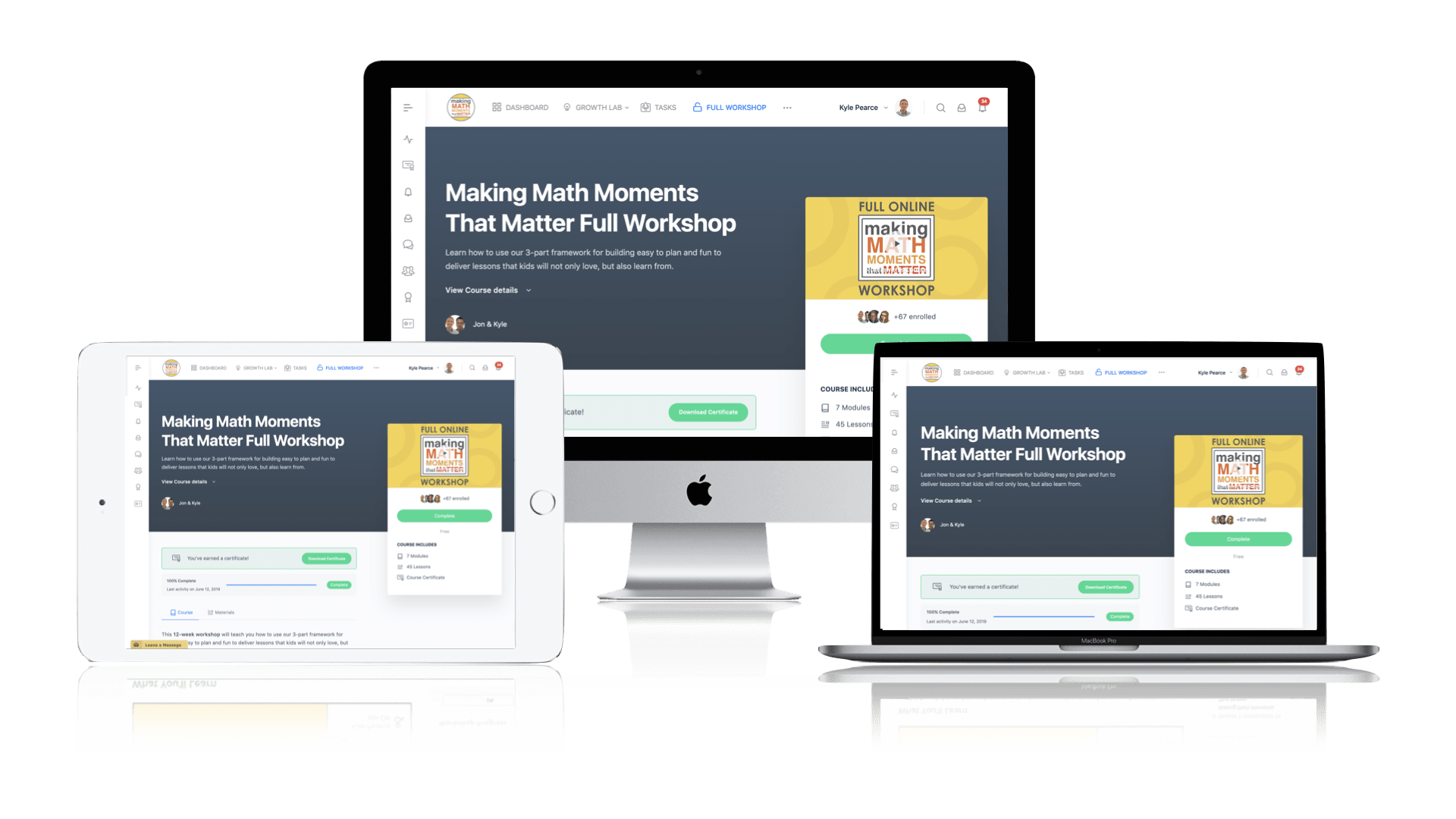
Pedagogically aligned for teachers of K through Grade 12 with content specific examples from Grades 3 through Grade 10.
In our self-paced, 12-week Online Workshop, you'll learn how to craft new and transform your current lessons to Spark Curiosity, Fuel Sense Making, and Ignite Your Teacher Moves to promote resilient problem solvers.
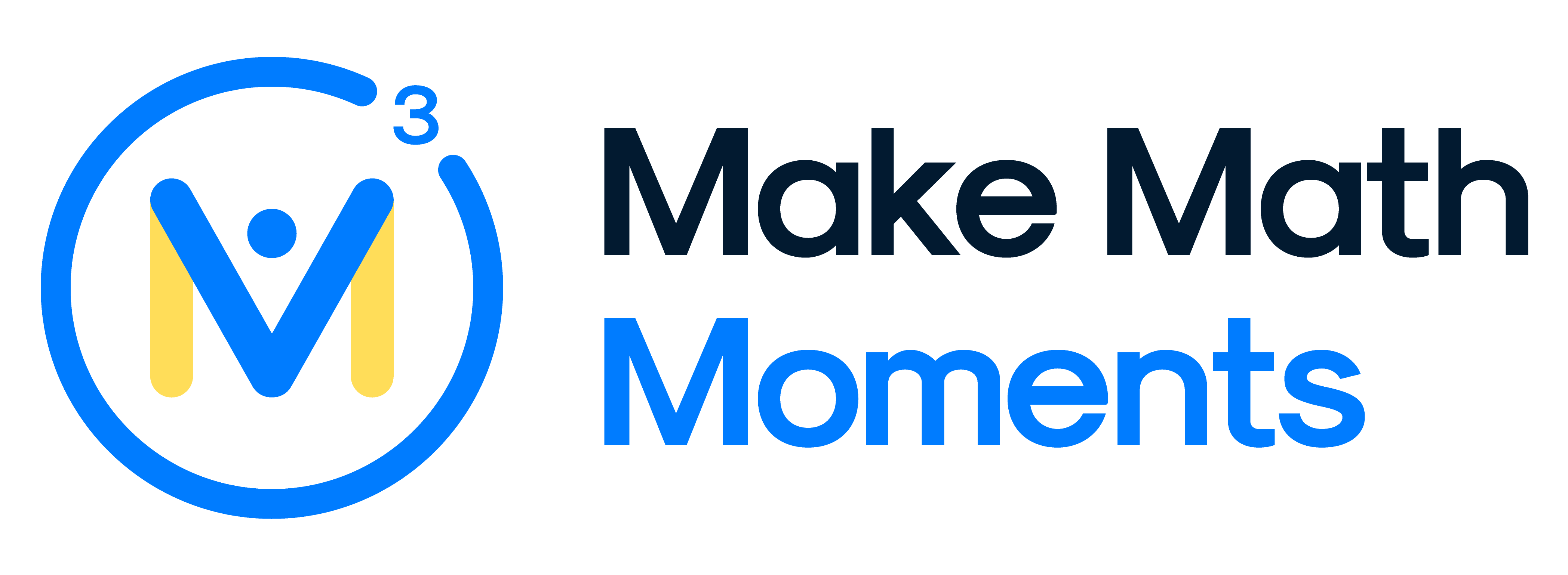



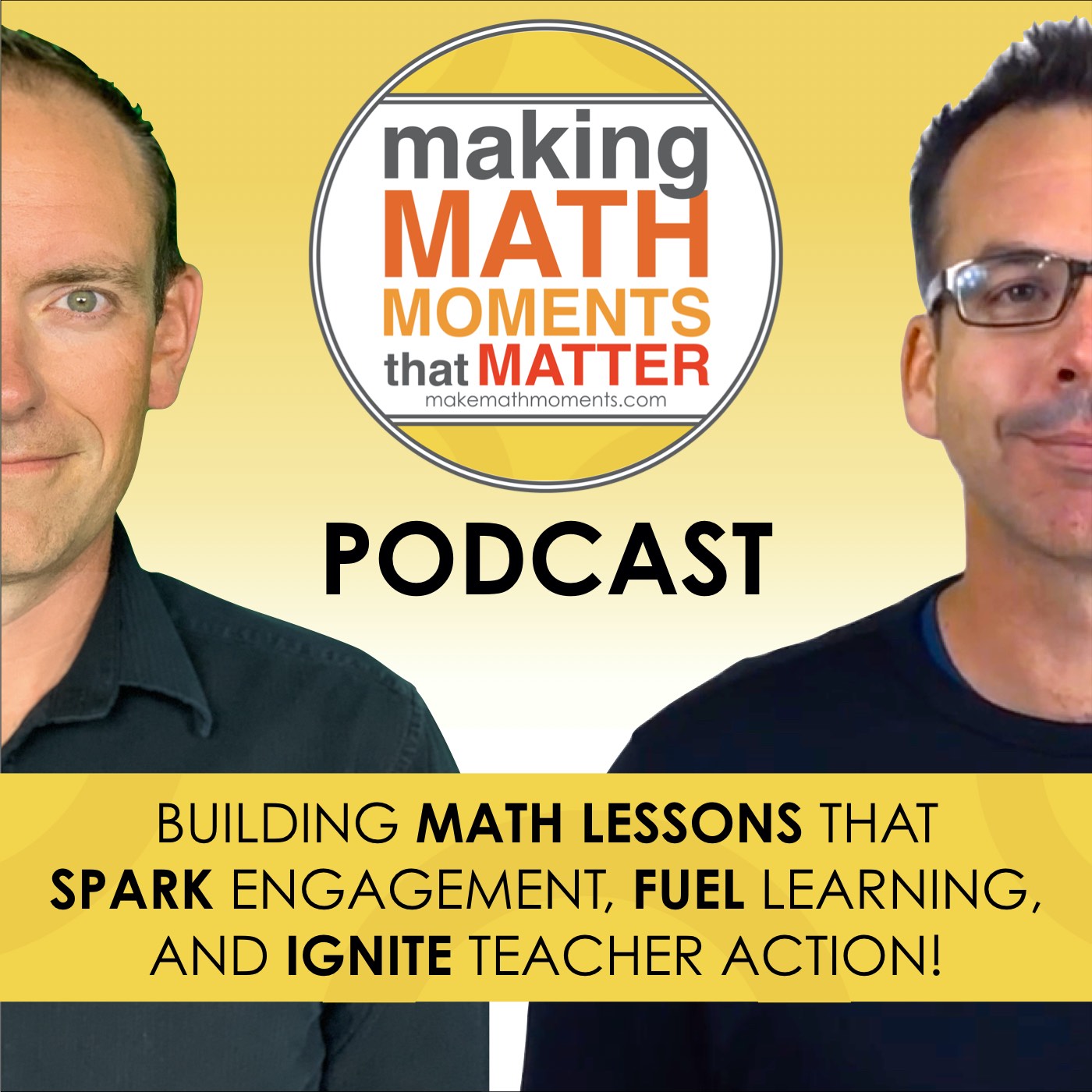
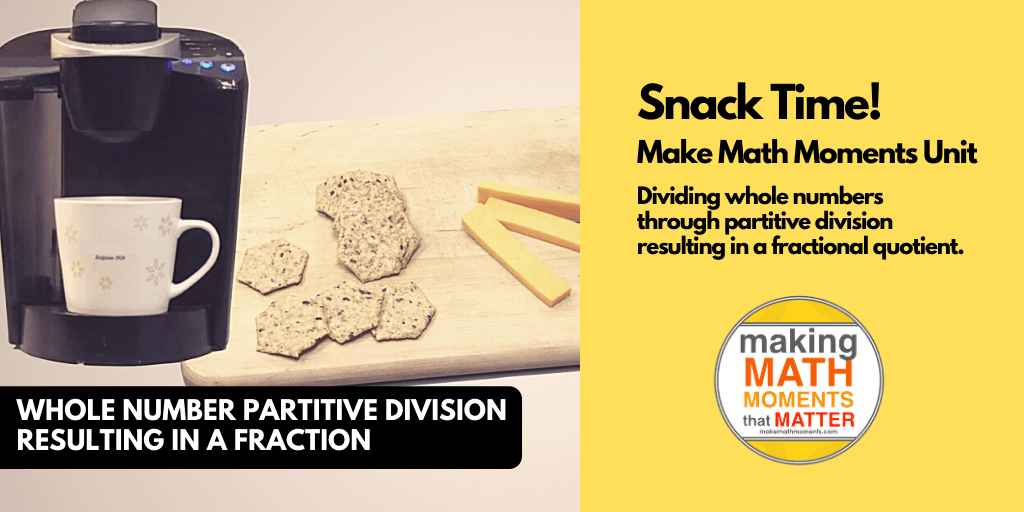
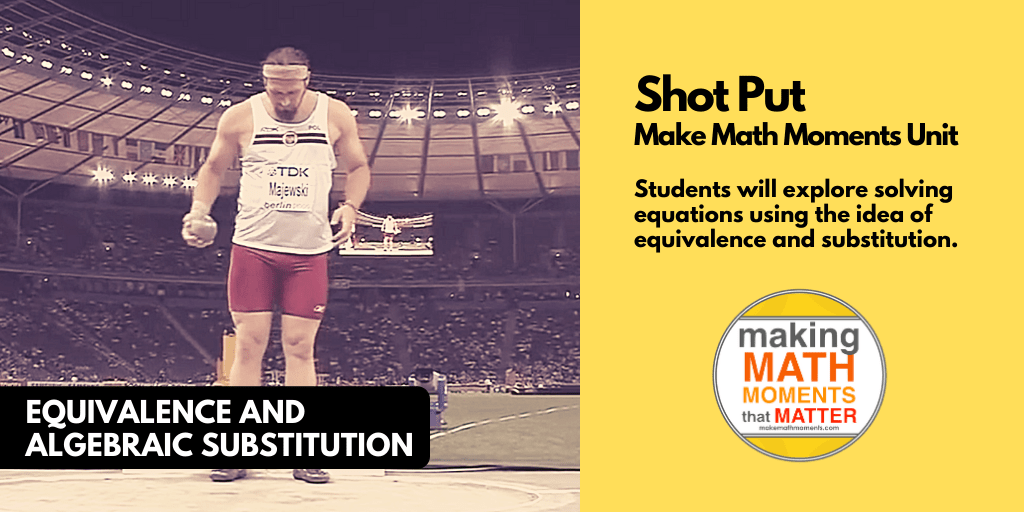
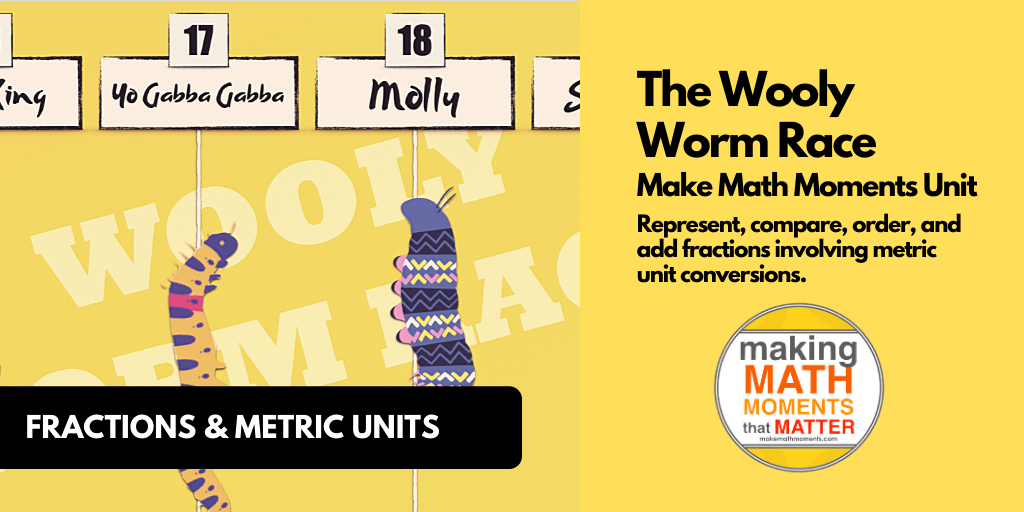
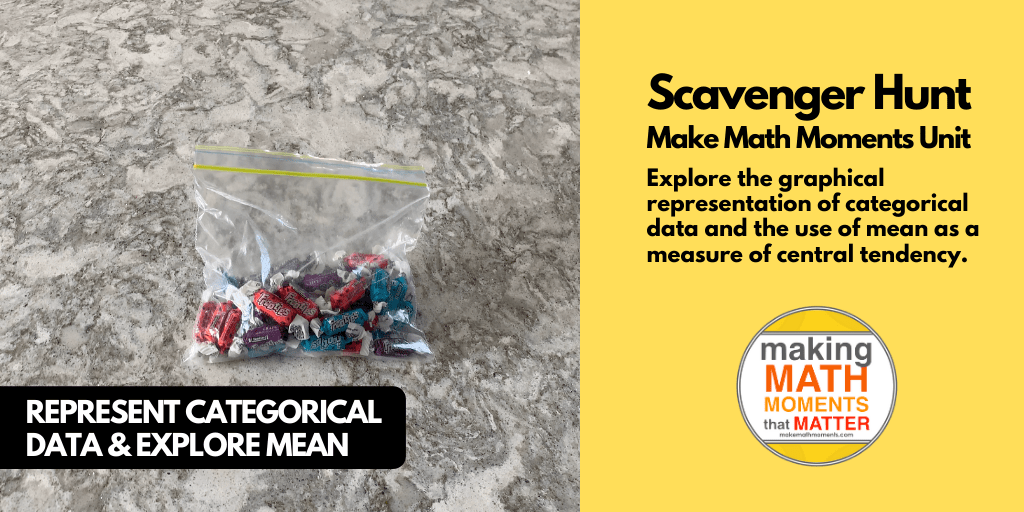

0 Comments